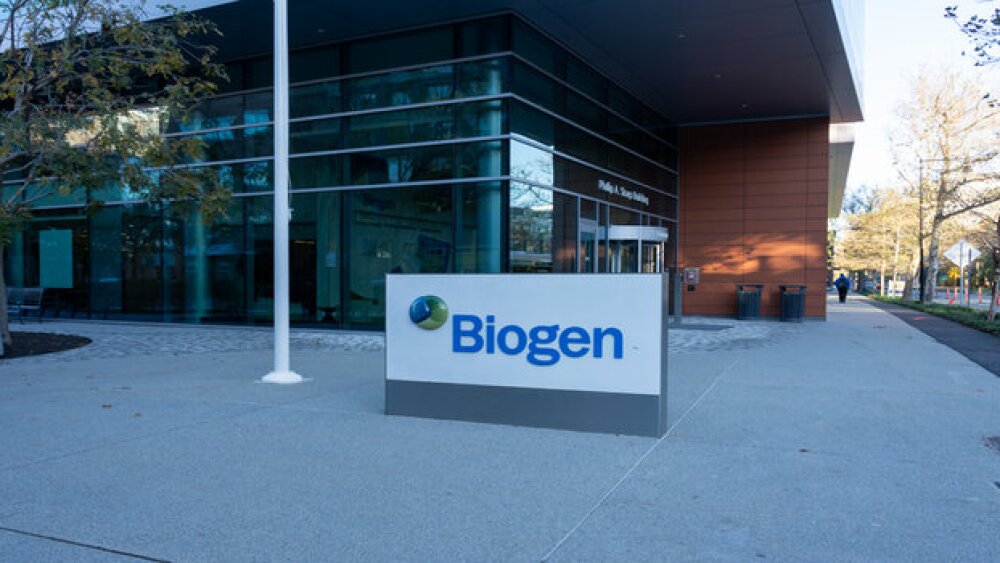- New data show therapy reduced risk of hospitalizations and death by 87 percent - Second positive Phase 3 trial readout for bamlanivimab and etesevimab together - Results support use of bamlanivimab 700 mg and etesevimab 1400 mg, the dose authorized in U.S. and several countries around the world
| INDIANAPOLIS, March 10, 2021 /PRNewswire/ -- Eli Lilly and Company (NYSE: LLY) today announced new data from the randomized, double-blind, placebo-controlled BLAZE-1 Phase 3 study, demonstrating bamlanivimab (LY-CoV555) 700 mg and etesevimab (LY-CoV016) 1400 mg together significantly reduced COVID-19 related hospitalizations and deaths (“events”) in high-risk patients recently diagnosed with COVID-19. These results provide additional efficacy and safety data that support the use of the dose recently granted both Emergency Use Authorization by the U.S. Food and Drug Administration (FDA) and a positive scientific opinion by the European Medicines Agency’s (EMA) Committee for Medicinal Products for Human Use (CHMP). This new Phase 3 cohort of BLAZE-1 included 769 high-risk patients, aged 12 and older with mild to moderate COVID-19 (therapy: n=511; placebo: n=258). There were four events in patients taking bamlanivimab with etesevimab and 15 events in patients taking placebo, representing an 87 percent risk reduction (p<0.0001). Bamlanivimab and etesevimab together also demonstrated statistically significant improvements on key secondary endpoints. These results are consistent with those seen in other data sets from BLAZE-1: in the previous Phase 3 cohort, bamlanivimab 2800 mg with etesevimab 2800 mg reduced the risk of hospitalizations and deaths by 70 percent and in the Phase 2 cohort, bamlanivimab alone reduced the risk of hospitalizations and ER visits by approximately 70 percent. The viral load reductions were also consistent with what was observed in the previous Phase 3 cohort of the study. In this new Phase 3 cohort, there were four deaths total, all of which were deemed related to COVID-19 and all of which occurred in patients taking placebo; no deaths occurred in patients receiving treatment with bamlanivimab and etesevimab together. Across the two Phase 3 cohorts of the study that have been analyzed to date, there have been no deaths in patients receiving treatment with bamlanivimab and etesevimab together, and 14 deaths in patients receiving placebo, 13 of which were deemed COVID-19 related. In this data set, the safety profile of bamlanivimab and etesevimab together was consistent with observations from other Phase 1, Phase 2 and Phase 3 trials evaluating these antibodies. “These positive results reinforce our previous findings and support the authorized dose of bamlanivimab 700 mg with etesevimab 1400 mg. These compelling data – in addition to the recent EUA from FDA, the CHMP decision from EMA and the recommendation for the therapy in the National Institutes of Health’s COVID-19 Treatment Guidelines – give healthcare providers additional information regarding the use of bamlanivimab and etesevimab together as a potentially life-saving treatment to help those most at risk for severe complications of COVID-19,” said Daniel Skovronsky, M.D., Ph.D., Lilly’s chief scientific officer and president of Lilly Research Laboratories. “The consistent results observed in multiple cohorts of this trial over several months, even as new strains of COVID-19 have emerged, indicate bamlanivimab with etesevimab maintains its effects against a range of variants, particularly those circulating in the U.S.” Lilly continues to engage with global regulators to make bamlanivimab alone and bamlanivimab and etesevimab together available around the world. Bamlanivimab alone and bamlanivimab with etesevimab together are authorized under special/emergency pathways, in the context of the pandemic, in the U.S. and the European Union. In addition, bamlanivimab alone is authorized for emergency use in Canada, Panama, Kuwait, the UAE, Israel, Rwanda, Morocco and numerous other countries. Through Lilly’s work with the Bill & Melinda Gates Foundation, Lilly is providing doses of bamlanivimab free of charge in Rwanda and Morocco. For more information about the use of bamlanivimab alone or bamlanivimab and etesevimab together for the treatment of mild to moderate COVID-19 in high-risk patients under the FDA’s emergency use authorization, contact Lilly’s 24-hour support line at 1-855-LillyC19 (1-855-545-5921). Patients and physicians can visit lillyantibody.com to learn more, including how to find a potential treatment location. For media resources, including product images and fact sheets, please click here. Important Information about bamlanivimab alone and bamlanivimab and etesevimab together Bamlanivimab and etesevimab together and bamlanivimab alone have not been approved by the FDA for any use. It is not known if bamlanivimab and etesevimab together or bamlanivimab alone are safe and effective for the treatment of COVID-19. Bamlanivimab and etesevimab together and bamlanivimab alone are authorized under Emergency Use Authorization only for the duration of the declaration that circumstances exist justifying the authorization of the emergency use under Section 564(b)(1) of the Act, 21 U.S.C § 360bbb-3(b)(1), unless the authorization is terminated or revoked sooner. Healthcare providers should review the Fact Sheet for information on the authorized use of bamlanivimab and etesevimab together and bamlanivimab alone and mandatory requirements of the EUA. Please see the FDA Letter of Authorization, Fact Sheet for Healthcare Providers, and Fact Sheet for Patients, Parents and Caregivers (English) (Spanish) for bamlanivimab and etesevimab together. Please see the FDA Letter of Authorization, Fact Sheet for Healthcare Providers, and Fact Sheet for Patients, Parents and Caregivers (English) (Spanish) for bamlanivimab alone. Authorized Use and Important Safety Information Bamlanivimab and etesevimab together and bamlanivimab alone are authorized for use under EUA for treatment of mild to moderate COVID-19 in adults and pediatric patients (12 years of age and older weighing at least 40 kg) with positive results of direct SARS-CoV-2 viral testing, and who are at high risk for progressing to severe COVID-19 and/or hospitalization. Limitations of Authorized Use
Important Safety Information Hypersensitivity Including Anaphylaxis and Infusion-Related Reactions Infusion-related reactions have been observed with administration of bamlanivimab and etesevimab together and bamlanivimab alone. These reactions may be severe or life threatening. Signs and symptoms of infusion-related reactions may include:
If an infusion-related reaction occurs, consider slowing or stopping the infusion and administer appropriate medications and/or supportive care. Clinical Worsening After Bamlanivimab Administration Limitations of Benefit and Potential Risk in Patients with Severe COVID-19 Adverse Events Based on Phase 3 data from BLAZE-1, the most common adverse events were nausea, dizziness, and rash. These events each occurred in 1% of subjects treated with bamlanivimab and etesevimab together and in 1% of placebo subjects. Bamlanivimab alone Use in Specific Populations Breastfeeding About bamlanivimab Lilly has successfully completed a Phase 1 study of bamlanivimab in hospitalized patients with COVID-19 (NCT04411628). A Phase 2/3 study in people recently diagnosed with COVID-19 in the ambulatory setting (BLAZE-1, NCT04427501) is ongoing. A Phase 3 study of bamlanivimab alone or bamlanivimab and etesevimab together in residents and staff at long-term care facilities (BLAZE-2, NCT04497987) is also ongoing. In addition, bamlanivimab is being tested in the National Institutes of Health-led ACTIV-2 study in ambulatory COVID-19 patients. About etesevimab Lilly has successfully completed a Phase 1 study (NCT04441931) of etesevimab in healthy U.S. volunteers to evaluate the safety, tolerability, pharmacokinetics and immunogenicity. A Phase 2/3 study in people recently diagnosed with COVID-19 in the ambulatory setting (BLAZE-1, NCT04427501) is ongoing. Junshi Biosciences has completed a similar Phase 1 study in healthy volunteers in China and has initiated Phase 1b/2 trials in COVID-19 patients globally. About BLAZE-1 In the Phase 2 portion of BLAZE-1, cohorts of mild to moderate recently diagnosed COVID-19 patients, were randomized to one of three doses of bamlanivimab (700 mg, 2800 mg, and 7000 mg), bamlanivimab 2800 mg plus etesevimab 2800 mg, or placebo. Results from the Phase 2 cohorts of BLAZE-1 were published in the New England Journal of Medicine and The Journal of the American Medical Association. In the Phase 3 portion of BLAZE-1, the combination therapy arms enrolled mild to moderate, recently diagnosed COVID-19 patients who are at high risk for progressing to severe COVID-19 and/or hospitalization, studying bamlanivimab 2800 mg plus etesevimab 2800 mg versus placebo, and bamlanivimab 700 mg plus etesevimab 1400 mg versus placebo. The primary outcome measure for the Phase 3 portion of the BLAZE-1 trial was the percentage of participants who experience COVID-related hospitalizations or death from any cause by day 29. The key secondary endpoints were change from baseline to day 7 in SARS-CoV-2 viral load, persistently high SARS-CoV-2 viral load on day 7, time to sustained symptom resolution, and COVID-related hospitalization, ER visit or death from any cause from baseline by day 29. Additional endpoints include change from baseline in viral load at other time points, symptom improvement, symptom resolution, as well as safety. The study is ongoing with additional treatment arms. About Lilly’s COVID-19 Efforts About Eli Lilly and Company Lilly Cautionary Statement Regarding Forward-Looking Statements
SOURCE Eli Lilly and Company | ||||||||
Company Codes: NYSE:LLY |






